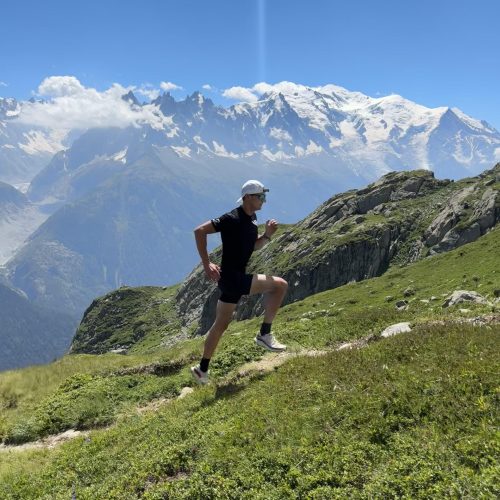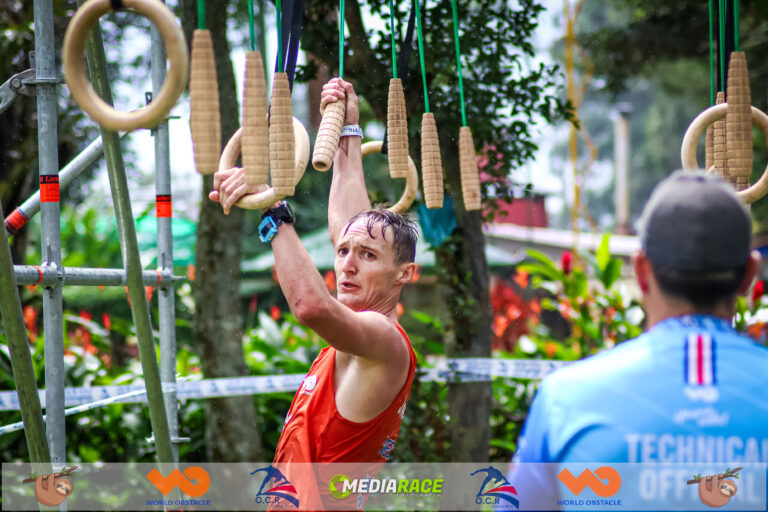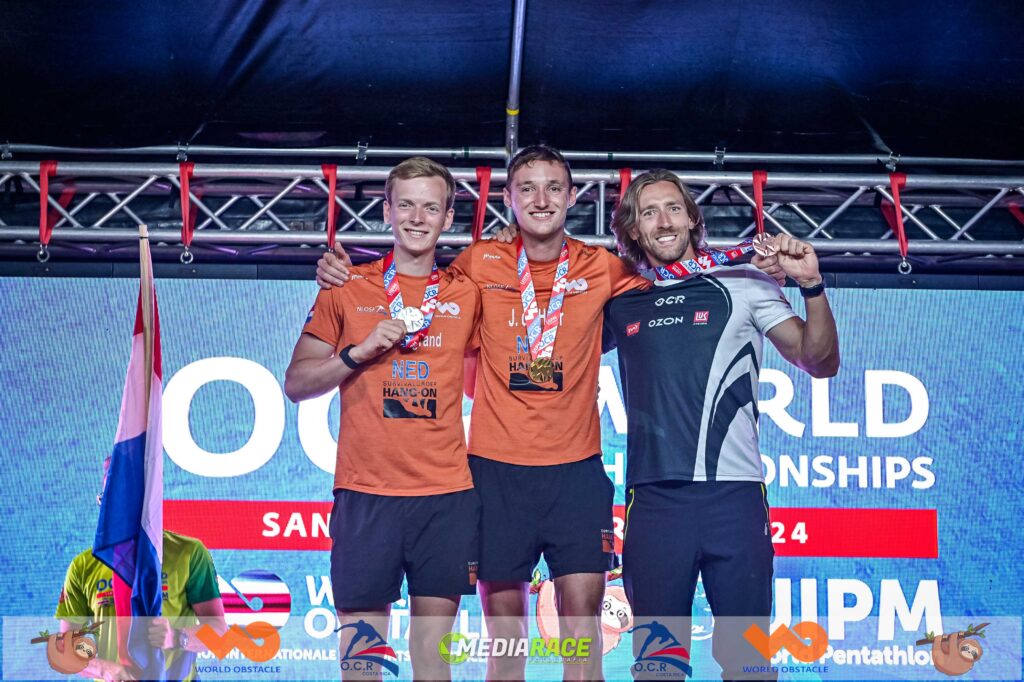My Journey to the World Championships
The European Championship went well. Months of training paid off, especially in the longer distance. However, I didn’t leave completely satisfied. Finishing second, just three seconds behind, from the second start group was too close for comfort. My performance in the short-distance race was less impressive. There are several reasons for this, but one significant factor was certain choices in my training structure. These are lessons I wanted to apply in my next major race. The World Obstacle Championships in Costa Rica. However, the decision to go to Costa Rica was only made 5 weeks before the race. But after a good summer period of training I could no longer deny it; I was in my best shape and not going was no longer an option.
Summer Sessions
I recovered relatively quickly after the EC and resumed training shortly after. The long summer holiday, one of the perks of working in education, provided the perfect opportunity for a solid training block. I also had the chance to spend an extended period at high altitude and train in the heat of the French Alps. I just love spending time cycling and running in the mountains, for me it’s an really easy way to put in the hours of work. Much easier than when doing the same runs on flat terrain at home. And the views in the mountains are something else. I could feel myself getting fitter. And during my stay in France, I booked a flight to Costa Rica.

Arriving in Costa Rica
Upon arriving in Costa Rica, I was immediately hit with a climate shock, and the jet lag didn’t help either. The temperature wasn’t much higher than in the Netherlands, but the humidity was overwhelming. Fortunately, I had time to adjust. The Airbnb we booked—my teammates Stijn, Frank, and I—was deliberately located at high altitude to help our bodies acclimatize. The race would also be at altitude.
The Standard Course (12km) would take place at the Doka Coffee Estate, a coffee plantation at about 1,500 meters above sea level near the capital, San José. The terrain was accessible in the days leading up to the race, giving me a good sense of what to expect. Initially, the course was not very technical, with grassy and gravel paths. To make it more challenging, some technical sections were added just days before the race: a 200-meter river crossing, a zigzag through coffee plants, and a steep climb through the jungle. Although 50 obstacles were initially planned, due to organizational issues, only about 20 remained. What was left was a fast course with short, explosive obstacles—a setup that, on paper, didn’t seem to play to my strengths.
The Short Course (3km) was held in the national stadium of San José, a unique location in the heart of the city. The course had 15 obstacles, primarily consisting of rigs with various grips, a few walls, and two carries: the Atlas Stone and the sled pull. Since the short course is incredibly fast, I always find it essential to scout each obstacle and visualize my execution. That way, I can perform the obstacles perfectly during the race. The running route was mostly paved and grass, except for the stadium stairs, which had to be conquered multiple times. It promised to be the fastest course in OCR history.

Short Course Race Day
The race weekend kicked off on Friday with the short course. My start group included top runners like Stijn Lagrand, Egor Belousov, Nikita Kryukov, Leon Kofoed, and Eduardo Esteban García. The race started at an incredible pace because everyone knew that passing each other on the stadium stairs would be nearly impossible. We hit the stairs after just 500 meters—a terrible idea in hindsight. Running up and down while trying to pass each other, even with some physical contact, was chaotic. It’s a miracle no one fell. After the stairs, the field spread out. I led with Stijn, followed closely by Egor, who took the lead at the Atlas Carry. Stijn and I followed closely behind.
The first technical obstacles appeared in the park. Running in third place, I couldn’t choose the best lanes, and my confidence in the obstacles wasn’t at its peak. I took fewer risks than I usually would. Despite this, I managed to overtake Egor and began chasing Stijn. With a few hundred meters to go, I closed the gap, but I was running on borrowed time—my heart rate and breathing were through the roof. If I wanted a shot at winning, I needed to make my move on the final obstacle. That obstacle was the “Firefighter”: thick hanging PVC pipes that had to be moved sideways. I jumped in right after Stijn, swung to skip three pipes…and missed. Spinning in circles, I hung on to one pipe as I saw my chance for gold slip away. Playing it safe, I completed the course and finished in a hard-fought second place, just six seconds behind gold. What made this podium even sweeter was Frank Oosterom completing the top three from the second start group, making it an all-Dutch podium!

Becoming a World Champion
The next morning, I woke up realizing I had nothing to lose. I already had a beautiful silver medal, but today, it was gold or nothing. This liberating mindset influenced my race strategy. I had thoroughly scouted the course, and the first 5km flew by on autopilot. Stijn, Martin Bäckström, and Egor Belousov followed, but we lost them at the river section. We had carefully scouted this part and knew the optimal path. Stijn and I ran together for several kilometers. I had two options: either break away or stay together until the last kilometer and make my move on the final technical obstacles. Based on my experience the previous day, that seemed too risky. At kilometer 7, I got my chance, gaining time on a sideways-moving net obstacle. With a 5-second lead, I hesitated—should I push now, with 5km to go? It was risky, but I remembered my morning mantra: all or nothing. I increased the pace. Stijn couldn’t keep up, and I watched the gap widen. At one point, I measured over a minute on my stopwatch. I slowed down, executing each obstacle with precision. One small mistake would have been disastrous.
As I approached the final obstacles, calm washed over me. After flawlessly completing the last obstacle, it hit me: I had done it. I was now a World Champion!

It’s hard to put into words what this title means to me. I’ve been involved in Obstacle Racing since 2015, and even before that, I competed in Survivalrun from the time I was 8 years old. When I raced in my first OCRWC in Ohio back in 2015, I finished 23rd, over 30 minutes behind the winner, Jonathan Albon. I looked up to those athletes; their performances felt almost superhuman, like something out of reach. I often wondered if I would ever be able to compete at that level.
Times have changed, and so have the athletes. But now, I can confidently say that no matter what race is thrown at me, I can compete at the highest level—and that’s something I’m incredibly proud of.
Over the past year, the thought of stepping away from OCR to focus on other sports, like trail running, has crossed my mind more than once. With this title under my belt, it feels like I could walk away without regrets. But not yet. There’s still unfinished business in OCR for me in the coming year. What happens after that… well, we’ll see


Prachtig beschreven door een groot sportman!